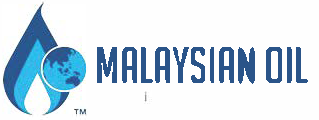Business
Products & Services
The refinery selects the crude and decides on the product slates to maximise its profitability within shareholders’ agreed boundaries. All products undergo stringent quality control before being distributed to the Singapore domestic market and export markets primarily in the Far East, under the brand labels of the shareholders.
MOR is also actively involved in the pursuit of integration synergy with downstream industries located on Jurong Island. The refinery is open to new business opportunity for purchase of intermediate process streams from potential suppliers as well as the sale of intermediate or finished products as feedstock for petrochemical and related industries.
Malaysian Oil Refinery SDN BHD (MOR)…1. Invitation for Pre-Qualification for Public Tender
Announcement Start Date: 10-Nov-2023
1. Invitation for Qualified Intermediary:
Malaysian Oil Refinery SDN BHD (MOR) is inviting suitably qualified Local & Foreign Companies and individuals to enter into a 12 months (1 year) supply of Crude Oil Contract with us. Interested entities should contact our procurement department for further details.
Products
Liquefied Petroleum Gas
Propylene
Chemical Naphtha
Reformate
Alkylate
Motor Gasoline
Kerosene / Jet Fuel
Gas Oils / Light & Heavy Diesel
Low Sulfur Fuel Oil
Bunker Fuel Oil
Heavy Residue
Asphalt
Molten Sulfur
Steam

Raw Materials
Hydrogen
Crude Oil
Atmospheric Residue
Manufacturing Capability & Facilities
MOR has a crude processing capability of 290,000 barrels of crude oil per day. Manufacturing operations are controlled 24/7 by a network of computerised control systems managed by teams of highly trained personnel, ensuring smooth and efficient operation.
CRUDE DISTILLATION UNITS
The refining process begins at the Crude Distillation Units (CDUs), of which there are three in our refinery. Crude enters the atmospheric distillation units and is distilled into different fractions, each with a specific boiling range. The fractions produced are further refined in various units to meet the specified product quality requirements. Most of the atmospheric residue is sent for vacuum distillation, separating vacuum gas oil and vacuum residue.
Catalytic Reformer Complex
The Catalytic Reformer Complex upgrades naphtha from CDUs into high octane reformate used in gasoline production.
Hydrocracker Complex
The Hydrocracker, employing the Unicracker Technology, enables the production of high quality and low sulphur middle distillate products, from heavy fuel oil components. Vacuum gas oil together with hydrogen are passed through the hydrotreating reactor to remove undesirable impurities, after which these are catalytically cracked through a process of high-temperature and pressure in the presence of catalysts and hydrogen. Products from the hydrocracking reactor are routed to distillation columns for product separation with some of the unconverted oil at the bottom of the fractionator recycled back to the hydrocracking reactor to increase the conversion. The presence of hydrogen in the hydrocracking process results in products with very low sulphur content and of superior quality that do not require further treatment. Lighter products such as naphtha, kerosene (jet fuel) and low sulphur automotive diesel form the main products. Sulphur compounds resulting from the hydrotreating process are recovered in the Sulphur Recovery Unit and finally produced as flaked sulphur.
Visbreaker
The Visbreaker unit upgrades heavy atmospheric and vacuum residues by thermal conversion to distillates and fuel oil with a low viscosity, providing more flexibility for MOR to meet the changing demands of the market.
Residue Catalytic Cracker Complex
The Residue Catalytic Cracker (RCC) processes heavy, low-grade residual oils into materials ranging from olefinic light ends and gasoline to diesel and fuel oil components. This process involves a fluidized bed of solid catalysts circulating rapidly between a reactor and a two-stage catalyst regenerator at very high temperatures. Light end olefinic products from the RCC are fed to the MTBE Unit and Alkylation Unit for producing additional gasoline blending components. The MTBE unit produces a high octane blending component known as MTBE (Methyl-Tertiary-Butyl-Ether), while the Alkylation Unit produces Alkylate. Together with a new Gasoline Desulfurization Unit commissioned in 2017, their combined production enhances MOR’s capability and flexibility to produce premium products such as high octane motor gasoline and diesel fuel without lead additives to boost SRC’s advantage in meeting the growing demand for environmentally-friendly transportation fuels throughout Asia.
Cogeneration Power Plant
Commissioned in 2017, the Cogeneration Power Plant (Cogen) Facilities are capable of firing natural gas to generate power and high pressure steam for MOR’s use. The Cogen, using clean energy, significantly improves energy efficiency amd reduces greenhouse gas emission.
STORAGE TANKS
MOR has extensive storage capacity with over 70 tanks for crude, blending components and final products.
BERTHS FOR LOADING TO SHIPS
Our refinery complex has extensive berthing facilities including 7 berths handling loading and discharge of crude and refined petroleum products. The berths can accommodate ships of up to 387,000 deadweight with maximum length overall of 355 meters and 21 meters loaded draft.
